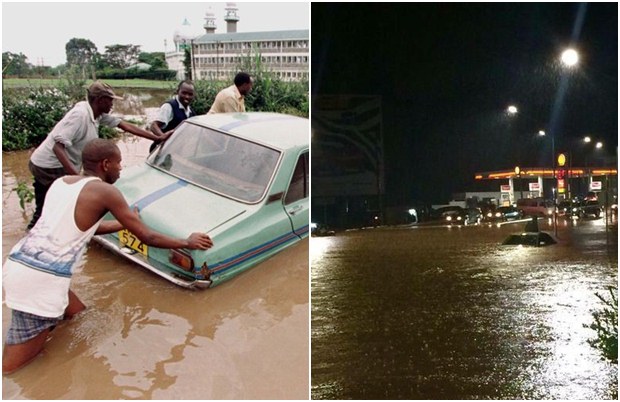The recent heavy downpour in most parts of the country has lead to numerous instances of motorists being swept off the roads, getting stuck and not to mention the loss of lives,property and traffic jams.

With this said it would important to look at some of the precautions that motorists can take in order to be careful on the flooded roads and eventually arrive to the destination safely.
1.Avoid flooded roads if you can and if impossible check the depth of the water before driving through.You can stop to observe cars driving through the water or check the depth using a stick.
2.Never attempt to drive through a flood that you couldn’t walk through and be aware that water hides dips in the road. Worse still, there may be no road at all under the water. Flooding can wash away the entire road surface and a significant amount of ground beneath.
- Drive slowly and steadily through the water (if ascertained that the depth of water is not extreme) and do not attempt to exit with speed as it can push water to the engine bay.The first gear is often advised while driving on a flooded road and care should be taken to avoid the water from getting to the exhaust pipe.
4.If the car stops, leave the bonnet closed to prevent water from getting in then get out of the vehicle and go to a dry area until floods recede.
5.Just six inches of water will reach the bottom of most passenger cars; this depth can cause loss of control or possible stalling as water is sucked into the exhaust or washes into the air intake.In this case slipping the clutch and revving the engine will help to keep the exhaust clear and keep the engine running if water splashes onto the electrics.
6.If negotiating a flooded section of road, drive in the middle where the water will be at its shallowest.
7.Consider other drivers pass through flooded sections one car at a time, don’t drive through water against approaching vehicles.
8.If your wheels start to lose grip partway through a flooded section it could be that the car is trying to float. To counter this, open a door and allow some water into the car, this will weigh it down, enabling the tyres to grip again.It’s probably best to get a passenger to do this so that you can continue revving your engine and slipping the clutch.
9.After driving through a flooded section of road,test your brakes (still driving slowly) and be prepared to drive them off by touching the brake pedal very lightly with your left foot.
10.If your car has been abandoned and has stood in deep water for a long period (an hour or more) it’s worth getting a mechanic to look at it before you try and start it. Alternatively, if you know a little about engines and have the appropriate tools, remove the spark plugs and turn the engine over to expel any water from the cylinders before trying to start the engine.
Drive safe!



